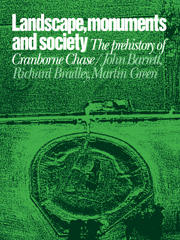3 - The Later Neolithic
Published online by Cambridge University Press: 07 May 2010
Summary
Introduction
The Later Neolithic can be considered as the period between the last long barrows in the study area and the development of henge monuments. It has a most distinctive flint industry and at least two traditions of decorated pottery: Peterborough Ware and Grooved Ware. It begins around the middle of the third millennium be and extends to about 1800 be, when this material began to be replaced by elements of the Beaker complex. At the same time, the tradition of individual burial in round barrows gained considerably in importance. The situation is so complex, however, that the period division must depend on the general currency of Beaker material, rather than its first appearance.
We ended the last chapter with the building of the Cursus complex. This chapter investigates the ways in which that monument and its associated long barrows influenced later developments, for the Cursus seems to have been as important in its relict state as it was when newly built. In the first part of this chapter we consider the distribution of settlement in relation to the sequence in the Hampshire Basin, and investigate how far everyday activity was influenced by the existence of this zone of complex monuments (Fig. 3.1). Then we report the results of two excavations undertaken close to the Cursus. One site overlay the Cursus itself, and its spatial organisation seems to have been determined by the position of the earlier earthwork; a second site alongside this earthwork contained two groups of pits, whose rather specialised contents may again reflect the importance of this monument.
- Type
- Chapter
- Information
- Landscape, Monuments and SocietyThe Prehistory of Cranborne Chase, pp. 59 - 108Publisher: Cambridge University PressPrint publication year: 1991



